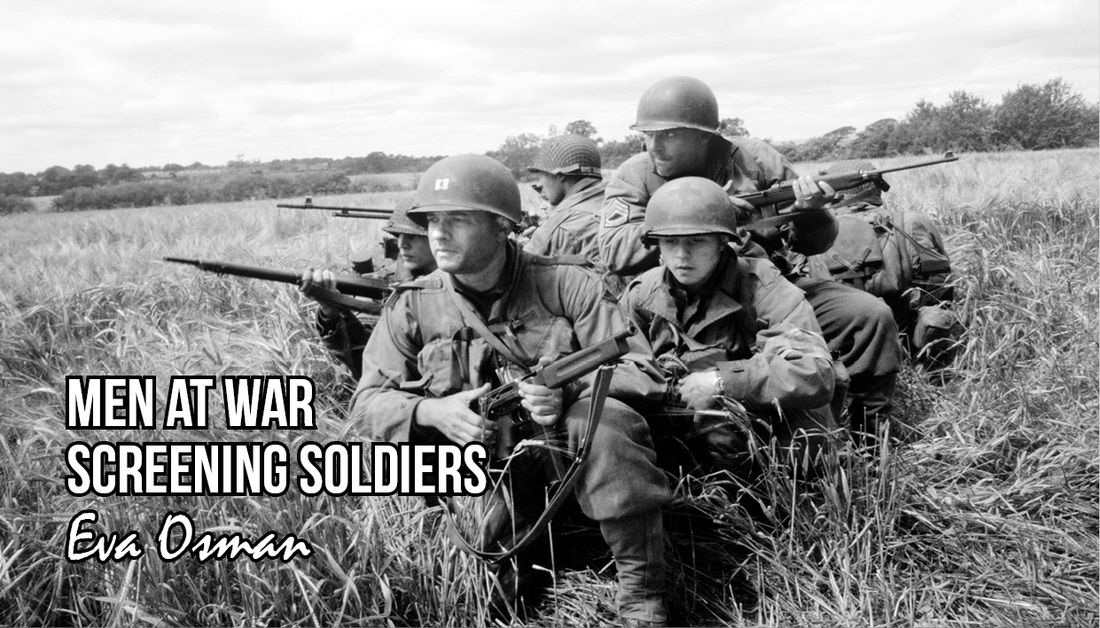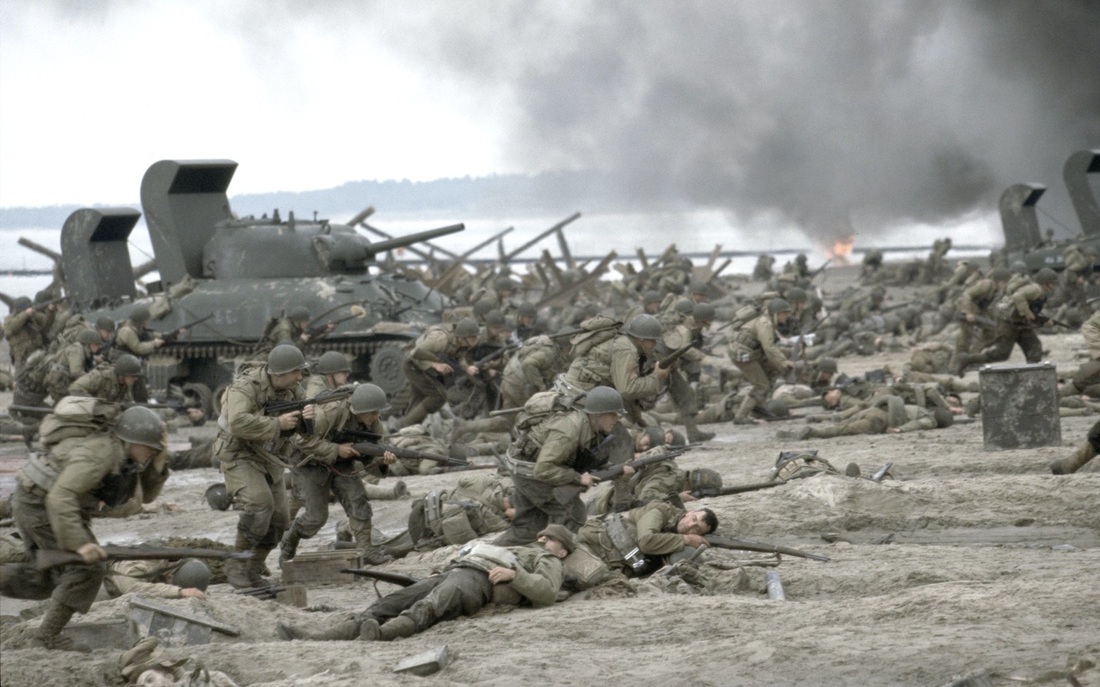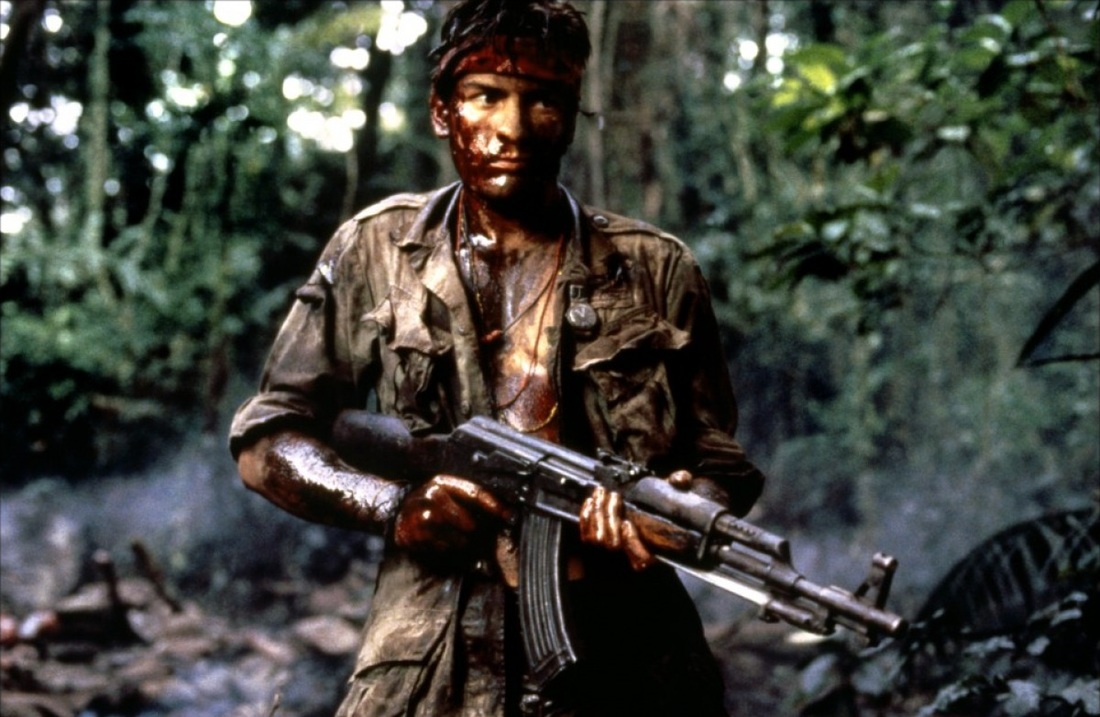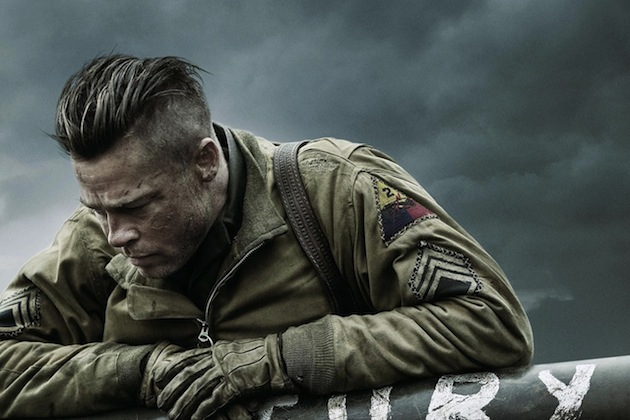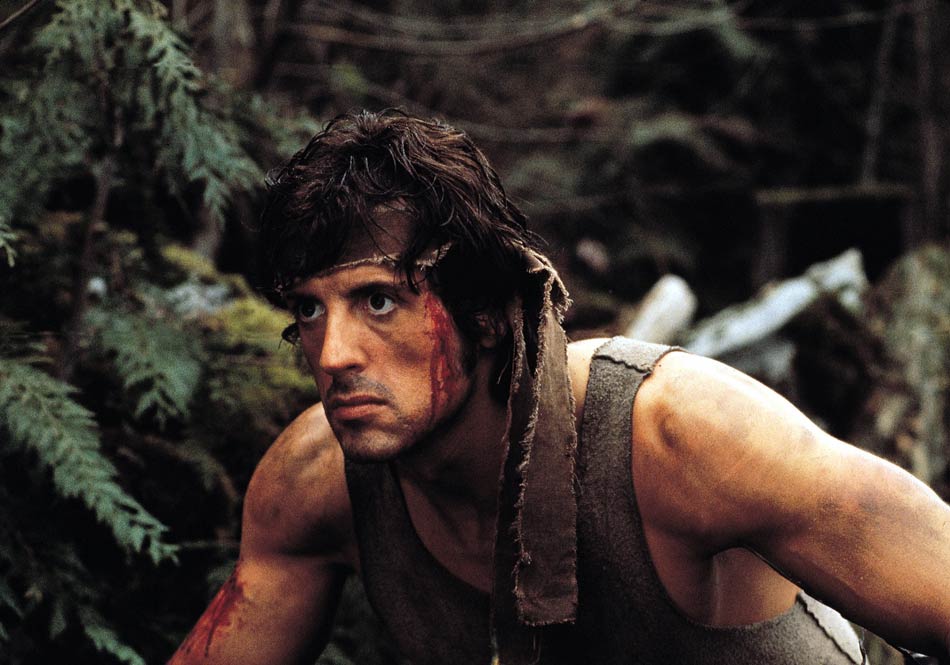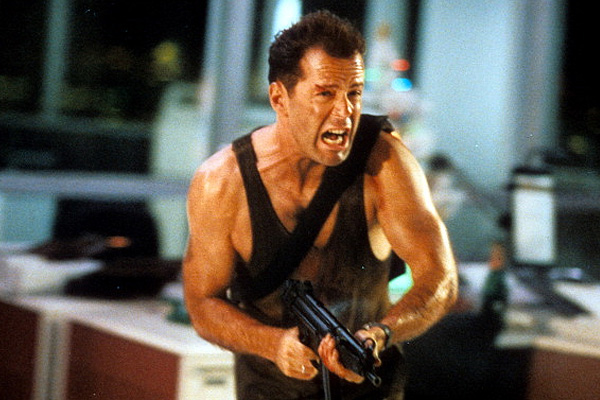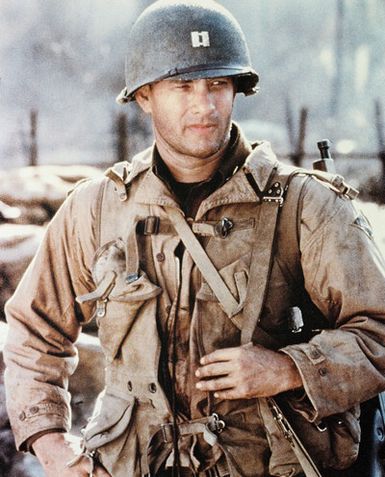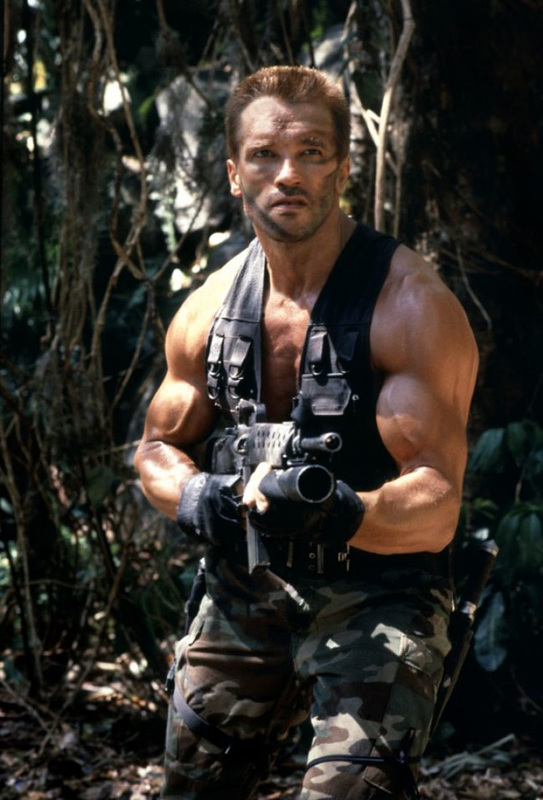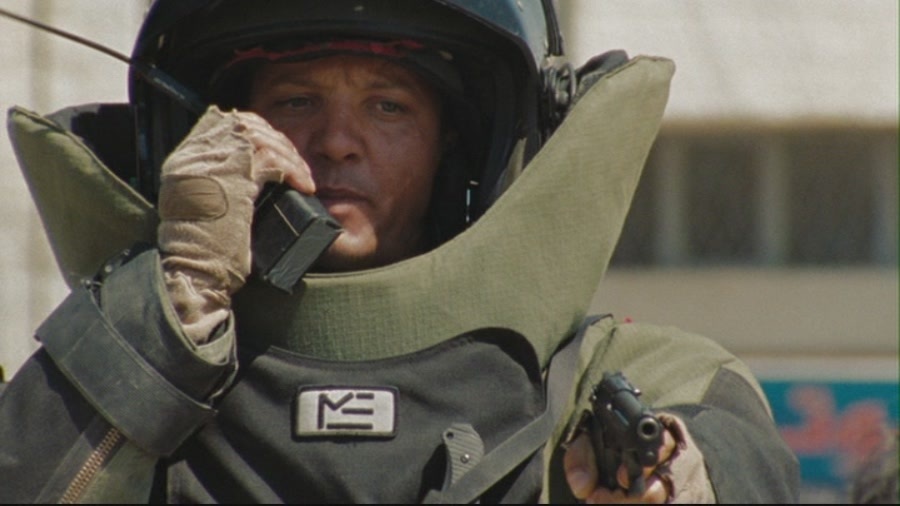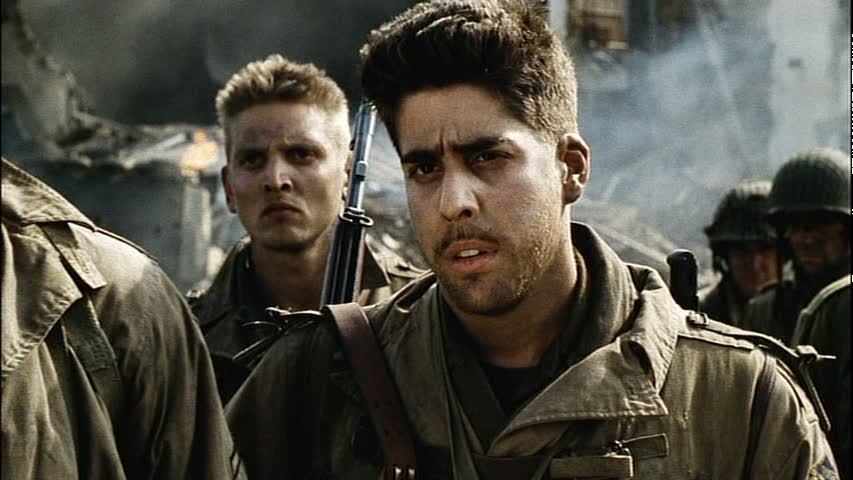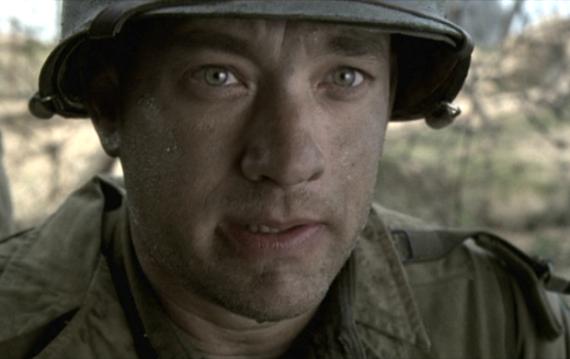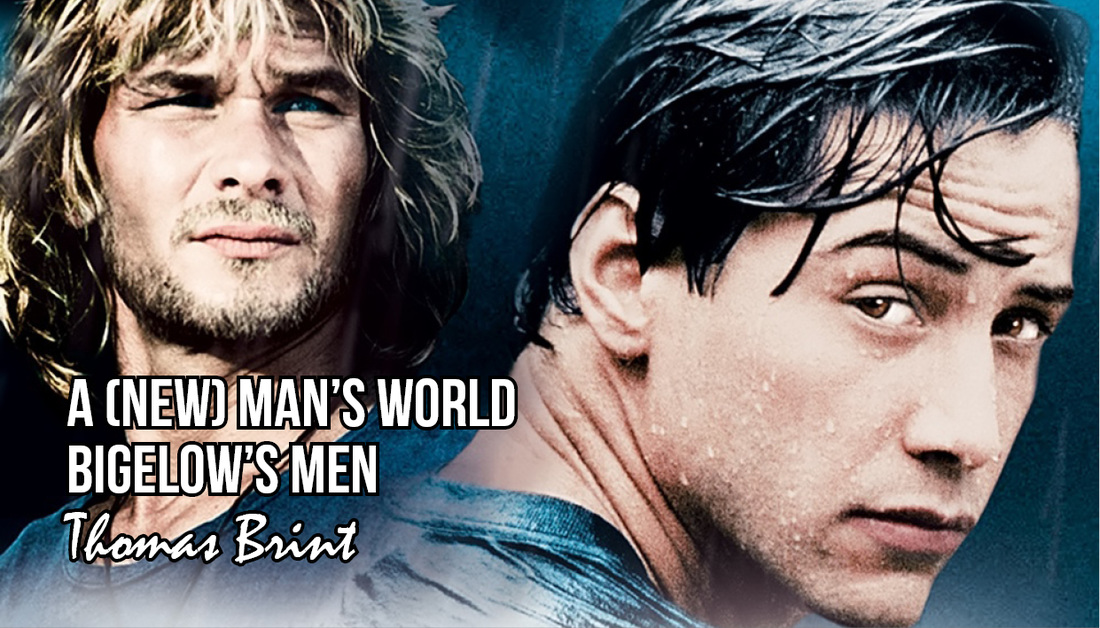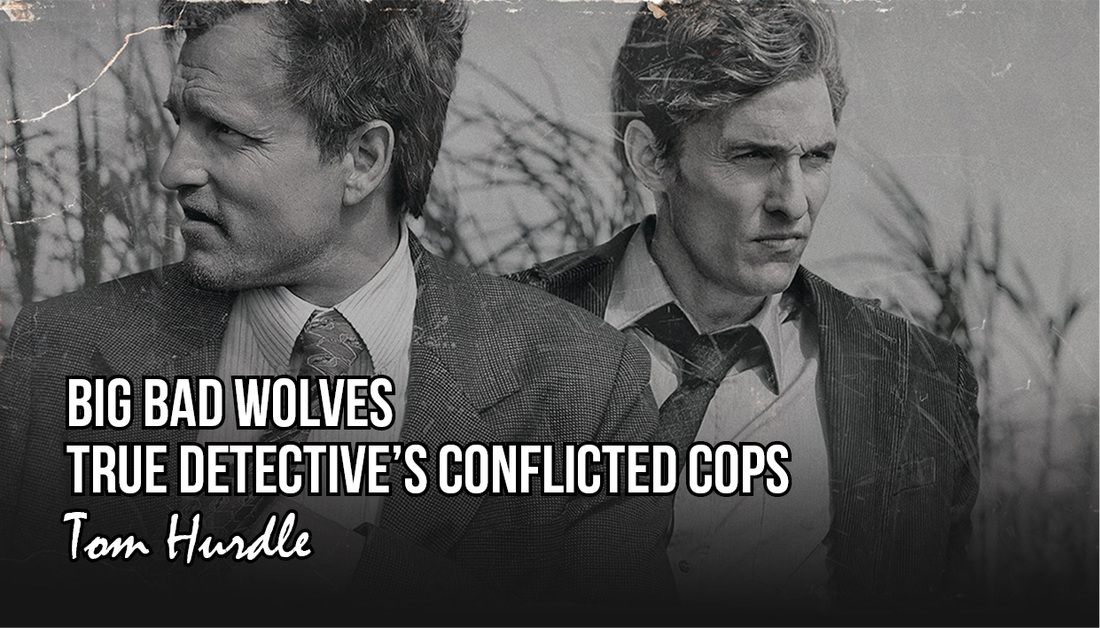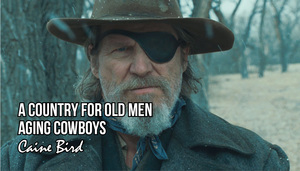Men at War: Screening Soldiers
|
Eva Osman
|
|
The landing craft doors fly open and soldiers storm, swim and crawl across Omaha Beach to find any form of shelter, struggling for initial comprehension. The tremulous camera finds Captain Miller (Tom Hanks) among a sea of mutilated bodies and tracks toward him as he strides out from the blood red ocean. Sounds of combat fade into clouds as he watches men around him painfully annihilated by enemy gunfire. To his left, a boat and its passengers are alight; the soldiers use the blood-dense ocean to extinguish their flames. An anonymous private screams “What the hell do we do now sir?” They are at war and Miller is their captain, their leader.
The war film continues to be a popular and successful genre and Hollywood has produced many spectacles depicting America’s various conflicts as they have been played out on battlefields and in trenches. The Deer Hunter (1978), Apocalypse Now (1979), Platoon (1986) and Full Metal Jacket (1987) all illustrate tales of the Vietnam War, while the horrors of warfare experienced in the Second World War have been visited in Saving Private Ryan (1996), Inglorious Basterds (2009) and Fury (2014), among others. The way conflict and the military are portrayed on screen shapes audiences attitudes and perceptions of war and soldiers. It is an exclusively male terrain. Representations of men and masculinity in cinema have been created via social constructs and predominantly displayed as the social ideal. Although these representations are not singular or fixed but are multiple and fluid, the hegemonic masculinity is that of a traditional, strong, reserved hero, a culturally praised heterosexual. The figure of the soldier promotes strength, courage and encapsulates the power of American men. In America on Film: Representing Race, Gender and Sexuality at the Movies (2004), Harry Benshoff and Sean Griffin write that the “military instilled ideals of masculinity in men themselves, values of aggressive action, suppressed emotion and leadership under duress…in an arena where performance of virile masculinity literally meant life or death”. The war genre underlines and strengthens a triumphant masculinity, a stoic American male. Susanne Kord and Elizabeth Krimmer note in Contemporary Hollywood Masculinities: Gender, Genre and Politics (2011) that the intimate historical connection between the US military and the film industry created “unlikely vehicles of pacifist messages, prone to portray war as an arena of male maturation”. This intimacy has allowed for only certain representations of America at war to be screened, disregarding unhinged violence and focussing on transforming boys into men. War has been portrayed as “an arena of male maturation”. War on screen generates portrayals of dominant masculinity because of military values and ideals and Saving Private Ryan’s Captain Miller exemplifies traditional male virtues. “Although he is courageous in combat, the film does not celebrate his courage under fire, but focuses on his sense of responsibility, his fatherly concern for his men and his strong ethics”, write Kord and Krimmer. Miller has a tic in his hand brought on by nerves, which humanises the male hero. He is not an unbreakable, untouchable human bag of muscle like other representations of hegemonic masculinity such as Sylvester Stallone’s John Rambo in First Blood (1982). Although Saving Private Ryan depicts the Second World War, it was produced in the late nineties and so reflects a more contemporary form of culturally idealised masculinity as well as that of the war-time forties.
In their 1990 article “Hollywood Views the Military”, Stanley Rothman, David Rothman and Stephen Powers write that combat movies used the soldier to reaffirm traditional ideas about masculinity and patriotism, emphasising traditional values of individualism, self-sufficiency, courage and pride. The service provided men with a clear sense of identity. Yet, as academics such as Mike Chopra-Gant and Donna Peberdy have argued, representations of masculinity on screen are performative. In Hollywood Genres and Post-War America: Masculinity, Family and Nation in Popular Movies and Film Noir (2006), Chopra-Gant understands masculinity “not as an inflexible, essential identity consequent on biological maleness, but as a construct, a complicated assemblage of exterior signifiers, such as clothing, and acquired behaviours that position the male body not as the source of masculine identity but as the site of its performance”. In Masculinity and Film Performance: Male Angst in Contemporary American Cinema (2011), Peberdy describes masculinity as an image to be performed or acted out whereby features such as “sure-footedness, inner strength, confidence or purpose” have become qualities to be displayed on the male exterior. Despite the fact that the function of military training is to equip men with the required fitness and skills for combat and to instil irreversible values in them, war films do not explicitly celebrate the male body in the way that the conventional action film repeatedly does. This is evident in characters such as Sylvester Stallone’s John Rambo who spends the majority of the Rambo film series topless, with a contour enhancing shine. Or Bruce Willis’s John McClane in the Die Hard film series, who sports a fitted vest throughout most of his vengeance-fuelled rampages to ensure his muscular definition is visible as he jumps, shoots and punches his way round New York City. Instead of underscoring physical features, Saving Private Ryan praises traditional manly values such as courage, loyalty and a sense of civic responsibility. Captain Miller is not incredibly Herculean, fighting topless with his sleeve tied around his head, but is a leader with an average physique who cares about his men and is looking to return to his wife in Pennsylvania. Ripped and robust actors such as Arnold Schwarzenegger, Sylvester Stallone and Bruce Willis actively encapsulated dominant masculinity during the eighties. In Representing Men: Maleness and Masculinity in the Media (2003), Kenneth MacKinnon says that “physical size, strength and ability to endure and use violence effectively suggest that masculine identity is linked to the use of the body as an instrument of power of control”. But at war, despite body training, contemporary soldierly masculinity is measured internally rather than externally. The ideal man in Hollywood today is a violent one. Violence is an important factor in representations of masculinity. At war, killing may be necessary and the moral stance of the individual soldier forms part of his masculine identity. In Kathryn Bigelow’s The Hurt Locker (2008), male identity is based largely on the soldiers’ attitudes toward death. Staff Sergeant William James (Jeremy Renner) is not afraid of death or war because he understands them both so deeply thus he embodies what Kord and Krimmer refer to as a “fantasy of extreme competence and utter calm amidst danger”, an idealised masculinity.
When a group of soldiers in Saving Private Ryan find themselves in possession of a surrendering German soldier, Captain Miller refuses to disregard the military codex that ensures the well-being of foreign prisoners despite his men pushing for a violent execution at their hands. Miller blindfolds the prisoner and tells him to walk in the opposite direction of their mission and hand himself in to the first American soldiers he comes across. However, when survivors join Private Ryan’s squad in defending the bridge that will inevitably allow the victor to advance, we see that it is the same German soldier Miller freed that shoots a bullet into his chest. This plot device suggests that decency is lethal and unacceptable as a standard of behaviour at war, and committing violence, often against protocol, should be necessary in a dominant masculine identity. Miller pays the ultimate price. Death is an overwhelming presence of the war combat genre. In films made during World War Two it was kept to a relative minimum to maintain the heroism of America by avoiding portrayals of brutality. Going to war celebrates cooperation, which challenges Joan Mellen’s conception of a fabricated single male in her book Big Bad Wolves: Masculinity in the American Film (1977). “We must admire males who dominate others”, she notes, “leaders whom the weak are expected to follow”. War films tend to reject the idea of a “lone wolf” because of their emphasis on service. They foster an ethos of cooperation and are described by Kord and Krimmer as “a genre in which the denial of self and self-sacrifice are presented as forms of empowerment”. In male presiding institutions such as the military, representations on screen will have a predominantly male cast and so homoerotic undertones are likely to become evident. A knife fight between Private Mellish (Adam Goldberg) and a German soldier in Saving Private Ryan is almost intimate when considering the way the men have been killing so far: from a distance with a gun. As the blade is forcibly driven into Mellish’s living flesh at the hand of the German soldier, the men stop being German and American, Nazi and Jew, but are two men sharing a physically intimate moment, more morbid than their surroundings. Such moments displace the heterosexual dominance of masculinity, although the war genre frequently finds ways to disregard homoerotic encounters and intimate moments of male bonding with an emphasis on family or brotherhood. It has been argued by both scholars and World War Two veterans that Saving Private Ryan achieves a realistic depiction of war populated by a range of masculine identities. The film reveals a shocking historical war that was previously censored and sanitised on the Hollywood screen. Captain Miller, the dominant male with whom we align ourselves, combines ideal hegemonic traits of the forties “Greatest Generation” with a contemporary sensitivity. This displaces and challenges the previously traditional hegemony and allows for the growth and development of a new, fluid spectrum of masculine representations • |

